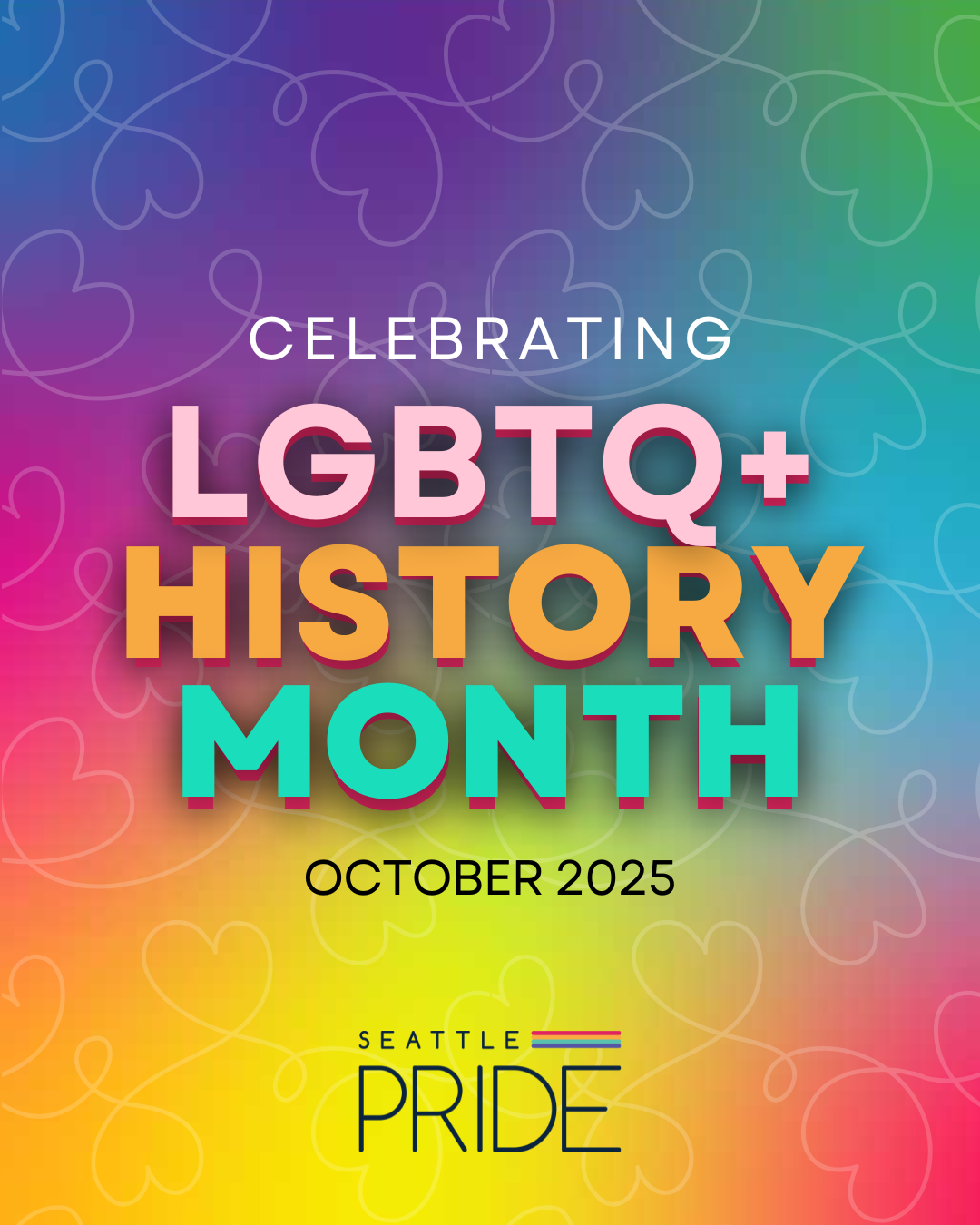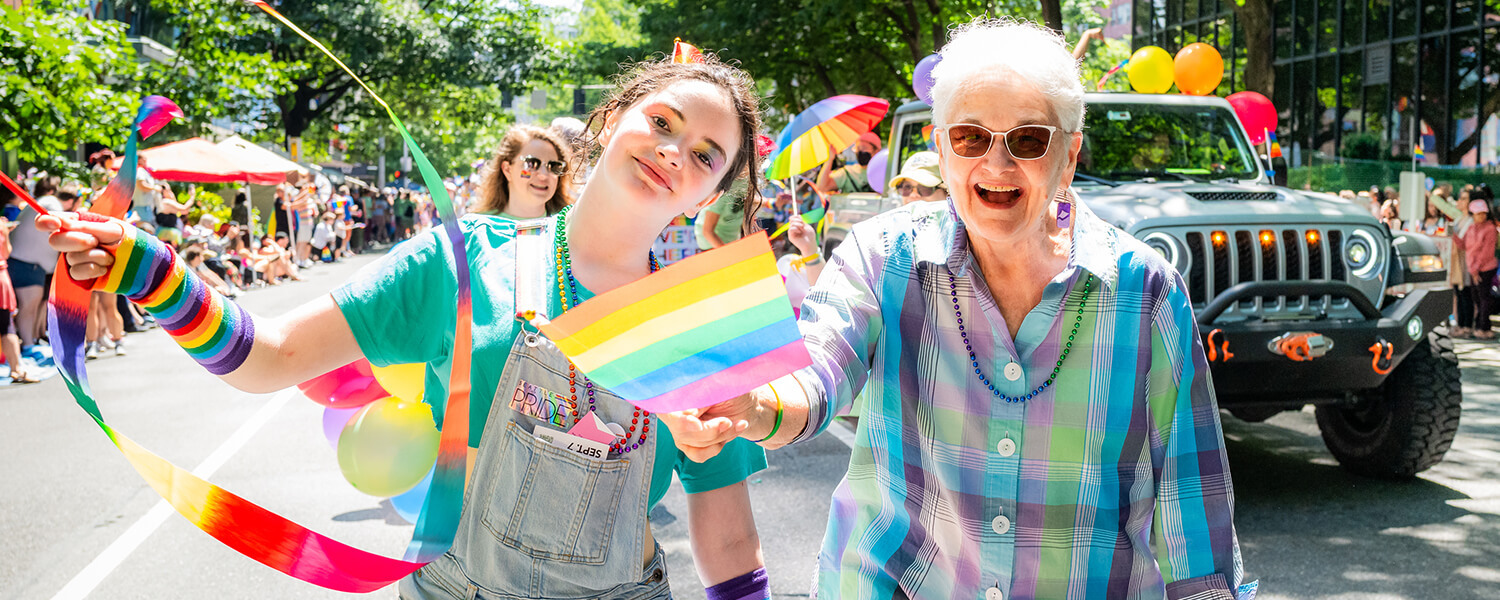
Seattle’s Queer Roots: Honoring LGBTQ+ History Month
Oct 07, 2025 | Seattle Pride
Since 1994, October has been recognized as LGBTQ+ History Month, a time to honor the impact and contributions of queer and trans people who have shaped our world. It’s also a chance to look closer to home and celebrate the vibrant, complex, and sometimes hidden history of Seattle’s LGBTQ+ community.
While many think of Capitol Hill as Seattle’s queer epicenter, the city’s earliest hub for queer life actually began further south in Pioneer Square. Long before rainbow crosswalks and Pride flags lined the streets, queer joy and connection thrived underground, literally.
In the early 1900s, same-sex relationships were criminalized, and queer people faced harassment, arrest, and public shaming. Yet even under threat, they built spaces to connect and celebrate. Pioneer Square became the beating heart of Seattle’s underground queer scene, a network of bars, dance halls, and social spaces that offered safety and belonging.
One of the first known after-hours spots was The Casino, which opened in 1933 on South Washington Street. It was one of the only bars on the West Coast where same-sex dancing was allowed, a small act of defiance that meant everything. Later, it became Madame Peabody’s Dancing Academy (or simply “The Dance”), continuing to serve as a cornerstone of queer nightlife.
Just blocks away, The Garden of Allah opened in 1946 in the basement of the Arlington Hotel, Seattle’s first gay-owned bar. Known for its dazzling drag and burlesque performances, it became a haven for locals, tourists, and military personnel alike. It was a social and community hub for many queer folks.
Throughout the mid-century, more spaces emerged: The Golden Horseshoe, Shelly’s Leg (Seattle’s first openly gay disco), and organizations like The Dorian Society, which was founded in 1967. The Dorian Society marked a shift toward activism, laying the groundwork for modern LGBTQ+ advocacy and Pride celebrations.
By 1974, Seattle hosted its first Gay Pride Week, organized by activist David Neth. The celebration included a picnic and street dance in Occidental Square Park, a “Gay-In” at Seattle Center’s International Fountain, and a roller-skating sing-along at Volunteer Park. A joyful, defiant act that would evolve into the Seattle Pride we know today.
Washington State has continued to make history in queer representation and rights. In 1991, Sherry Harris became the first out lesbian elected to the Seattle City Council and the first Black out lesbian elected to public office in the U.S. Moments like hers remind us that our state’s LGBTQ+ history is as much about political courage as it is about nightlife and community spaces.
Today, while Pioneer Square isn’t the “gayborhood” it once was, its legacy lives on above the surface. To experience this history firsthand, take the Beneath the Streets Queer History Tour, held every third Sunday of the month. It’s a one-of-a-kind journey through the spaces that shaped Seattle’s queer beginnings.
Want to dig deeper? Explore the Seattle Pride LGBTQ+ History Timeline

